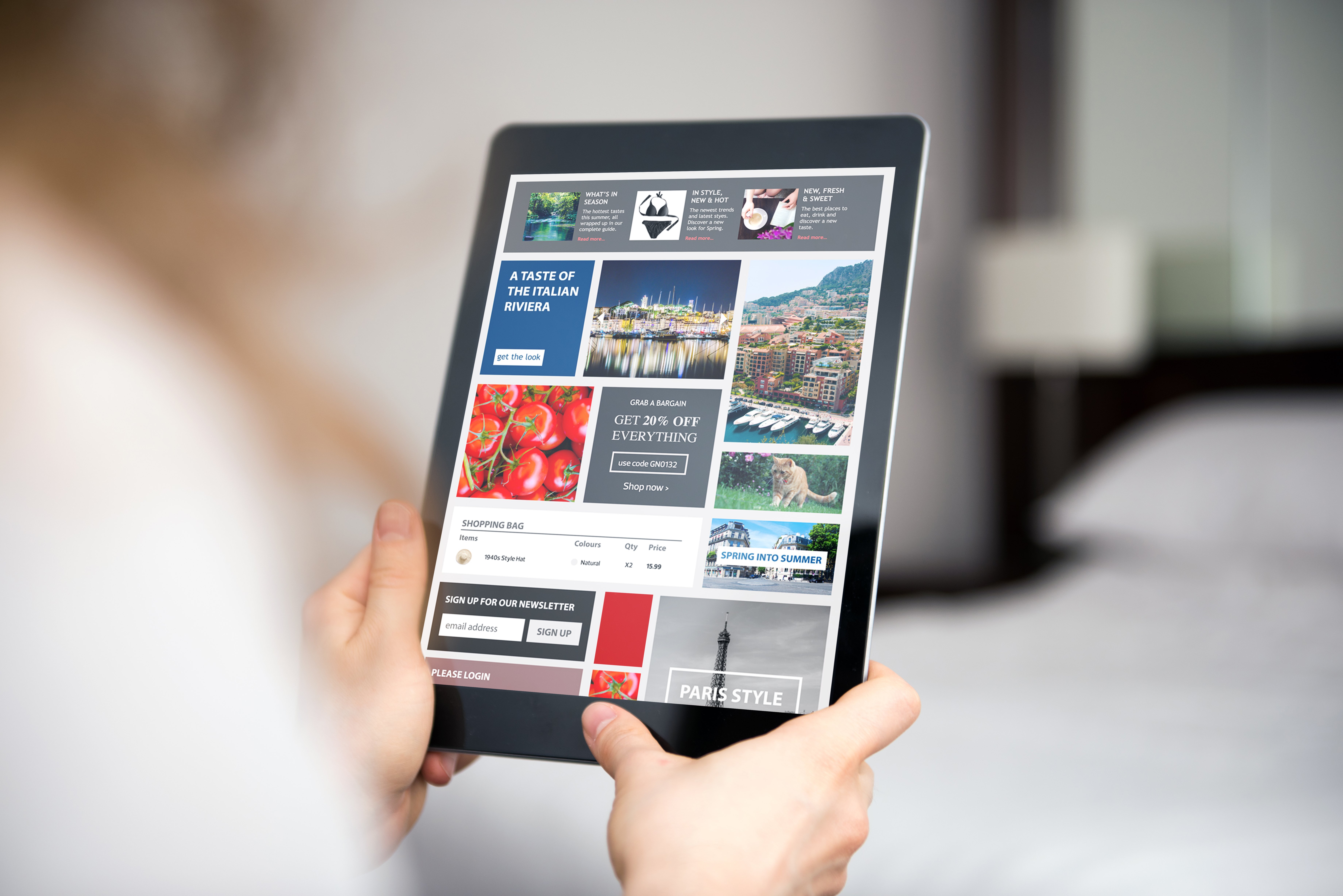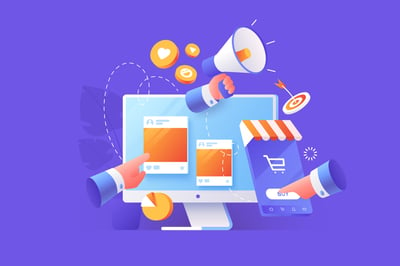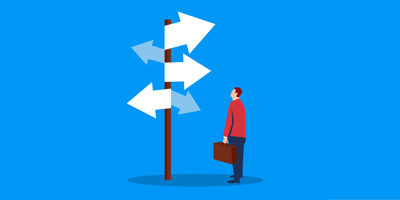December 16, 2020
 by Adelina Karpenkova / December 16, 2020
by Adelina Karpenkova / December 16, 2020

Looking for an advertising channel with a high level of audience engagement and low competition? You’re in the right place.
Native advertising is still a relatively uncommon advertising technique chosen by companies that don’t want to invest all their advertising budget in the well-known duopoly.
There are still lots of misconceptions about native advertising, and it’s often challenging to find reliable information about it. Whether you just want to figure out what native advertising is or already aim to add it to your advertising strategy, this ultimate guide is a great starting point.
What’s actually native advertising? Why would you need it? How is it different from paid social media advertising? In this section, you’ll find these and other questions answered.
Native advertising is the use of paid advertisements that match the form and feel of the editorial environment of the page they’re displayed on.
Native ads are usually displayed within content recommendation widgets that are placed below or next to articles on news outlets or online magazines. For ethical reasons, these widgets go with a disclosure, like ‘Sponsored stories’ or ‘Paid content’.
Native ads are widely used in the following business categories:
For companies that offer subscription-based services or online products, native advertising performs particularly well.
Native ad campaign run by Grammarly, a subscription-based writing assistance tool.
When users click a native ad and learn about an offer for the first time, they aren’t ready to commit right away. Low-commitment actions, like signing up for a free trial or taking a quick quiz are more likely to drive campaign clickers right into the sales funnel.
Services that require higher involvement from a user, like home renovations, insurance, and real estate also prove effective when advertisers manage to align their efforts with sales teams. Even though native advertising might not be as effective as Google Ads for driving direct conversions, a well-thought native ad campaign can bring more qualified leads than other channels would do.
But this approach will only prove effective when you work closely with your sales team – once a lead comes in, a sales manager steps in to set up a follow-up email campaign and convert them.
More and more companies are shifting their budgets from a well-known duopoly and testing out native advertising. What’s there in native ads that catches advertisers’ attention?
Undoubtedly, native advertising is less expensive than some paid social channels. But it’s not cheap.
While the average CPCs across top native ad platforms vary from $0.20 to $0.90, you can’t start with a daily budget of $50 and expect to see the results right away. With native advertising, your future campaign performance highly depends on how much you invest in the early stages.
Say if your goal cost per action is $10, to reach it fast, you need to start with a budget of >$5,000 per month. In this case, your campaigns will gather enough historical data insights in the first weeks that will allow you to optimize for better performance and reach your goal CPA.
Native advertising is a broad concept. You might have already heard about native ads on paid social media. Does it mean paid social ads and native ads are interchangeable terms?
If you scroll up to the definition of native advertising again, you’ll see that it perfectly describes in-feed ads on Facebook, Instagram, or any other social media channel. However, the term ‘native ads’ initially appeared as a way to describe promoted content that appears within, next to, or below articles on publishers’ websites.
It’s not a mistake to say ‘Facebook native ads’ given that everyone understands what you’re referring to.
With a growing trend on diversifying your advertising strategies with less popular but more effective channels, native is often considered the best alternative to Facebook. Having all the best features that advertisers like Facebook ads for, native ads also offer a few benefits that you won’t find on other platforms.
We’ve already seen that these two match one definition. Now, let’s go through the reasons native advertising might be a good alternative to Facebook ads:
As native advertising has a lot more to do with content than any other type of advertising, there are a few misconceptions about the relationship between native ads and content marketing.
Content marketing and native advertising aren’t interchangeable terms. You can’t even compare them like some marketers use to do.
According to HubSpot, content marketing is "the process of planning, creating, distributing, sharing, and publishing content to reach your target audience. It can boost factors like brand awareness, sales, reach, interactions, and loyalty.’"
Let’s have a look at the definition of native advertising again. This time, we’ll share how Outbrain defines it: "Native advertising is the use of paid ads that match the look, feel, and function of the media format in which they appear."
Simply put, content marketing is the approach focused on interacting with your target audience with the help of content. It includes two main stages: content creation and distribution.
On the other hand, native advertising is about interacting with your target audience with the help of ads (that might promote content). Instead of opposing these two, we’d rather refer to native as a part of the distribution phase of the content marketing strategy.
Questioning whether you should pick content marketing or native advertising is similar to comparing SEO and PPC. While SEO is aimed at driving long-term results, the latter is a strategy for boosting your reach fast. Once you stop running your paid campaigns, you won’t be driving traffic any more.
SEO and PPC work well as separate techniques, but when they’re aligned, it’s a total success. The same goes for native advertising and content marketing.
Native ads should become a natural extension of your content marketing strategy. By combining the finest content of content marketing and the reach of native advertising platforms, you’ll grow your brand exposure without extra effort.
Below you can see how Samsung AppStack combines the power of native advertising and quality content to promote apps in their store. The company doesn’t advertise typical landing pages. Instead, they offer users to learn how this or another tool will improve their lives and then gently drive them to the purchase decision.
The process of creating campaigns inside native ad platforms isn’t drastically different from the process you might have got used to with paid social channels. Here are six steps you need to take to build a successful native advertising campaign.
Before you even think of creating a landing page or defining your target audience, you should set a clear objective. Native ads work for a variety of goals.
These are campaign objectives native ad platforms usually offer you to choose from:
When you choose your campaign objective, top-notch platforms, like Taboola or Outbrain, will start automatically optimizing towards it within your bidding strategy.
Not only your targeting settings but also campaign content will depend on what audience you’re going to reach. It’s also important that your audience matches the goals you’ve set.
Here’s how your target audience is aligned with your campaign objectives:
Different native ad platforms might also offer unique targeting options like campaign clickers retargeting, but you should be cautious about using any advanced features before you test out less specific approaches.
Your choice of the native ad platform will affect the performance of your future campaigns. Why? Each platform has a different publisher network. Some offer large networks of websites with English-speaking audiences from the US and UK, others work best for smaller audience pools, say from Germany or France.
When working with platforms that don’t meet their needs, advertisers don’t have a chance to realize their campaigns to the fullest potential and finally give up on native advertising as a whole.
Content that you use within native advertising campaigns ideally should differ from other paid campaigns. Typical product landing pages will work as well, but it’s highly recommended that you test them against content created specifically for your native ad campaigns. You’ll see the key metrics will differ dramatically.
We’ve already highlighted the relation between native advertising and content marketing. This is also reflected in the way audiences perceive content promoted within native ad campaigns.
Readers of news outlets and online magazines eagerly interact with the following content types:
If you manage to fit your messaging in one of these formats, your campaigns are sure to resonate with your target audience and reach the goals set.
Did you pay attention to the ads that we’ve illustrated above? All of them promise readers to share some valuable information. Native advertising has nothing to do with hardsell.
Good ad creatives are crucial to your campaign success. When they aren’t catchy enough, nobody will even see your great landing pages. On the contrary, ads that attract tons of clicks by giving a false impression will simply waste your budget.
Whatever channel you advertise on, the best practices for ad creatives will be pretty much the same. Native advertising is no exception. Ideally, you’ll want to reduce the word count, use the main keyword at the very beginning of a title, include CTAs, mention numbers or costs, and use other techniques recommended in the guides.
Apart from the common best practices, there are a few more tips you’ll need to follow to make the most out of your native ads:
Before you launch your first native advertising campaign, ensure everything is ready.
Do you want to set hours or days when your campaigns will be displayed? Most native ad platforms allow you to make selections for specific days and times when your ads are live.
For instance, a B2B company might want to pause ads that offer product demos at times when their target audience is outside of work and focus on campaigns promoting content that can be consumed at all hours instead. Creating a unique ad schedule for every campaign will help you save your budget and maximize performance.
It’s always better to start higher than average and then reduce your bid gradually day by day. Like Facebook or Google, quality native ad platforms have a budget pacing feature. This means that you can specify how fast you want your campaign budget to be spent. Usually, you can choose between distributing your budget evenly throughout the day/month or spending it as soon as possible.
Regardless of your campaign goals and settings, you’ll need a proper tracking setup. Of course you’ll find all the necessary metrics right in the platform dashboard. But since the platform’s conversion tracking might sometimes fail to extract accurate numbers, it’s a good idea to have more than one source of data at your disposal.
With this in mind, utilizing UTM parameters to keep track of your campaign performance with Google Analytics or any other custom BI solution will be the best decision.
Ongoing optimization is the key to your campaign success. You can’t expect that your campaigns will start delivering the desired results in the first few days. It takes weeks to set up an effective campaign and identify approaches that work for you.
What if it seems that you’ve optimized everything you could but the campaigns are still underperforming? It’s not unlikely that you’ve made one of the following mistakes.
The side effect of over-optimization is a limited reach. You can’t evaluate the effectiveness of ads that don’t gain enough impressions. To avoid this issue, view ‘reach estimators’ that are displayed next to your campaign settings. This indicator provides estimates on the potential campaign reach per month.
There are two problems advertisers usually face: ads don’t get clicks and ads get too many clicks that hardly ever result in conversions. In both cases, changing campaign messaging and creating a different landing page might help.
Low CTRs may indicate that you picked the network that doesn’t reach your target audience. Still, this reason can be considered only after you test different campaign content, ad messaging, and targeting options.
It could also happen that your native ad campaigns do deliver leads, but they don’t convert. While the issue could be related to the way you nurture these leads, it’s also likely that you can solve it by fixing your campaigns.
When setting up a native ad campaign, you need to look at the bigger picture. Think of how your actions will help you get closer to reaching your business goals. Getting tons of leads makes no sense unless these people are potentially interested in your company’s products or services. By revisiting your strategy and developing lead magnets that are highly relevant to your prospects’ interests, you’ll improve lead quality and get more conversions.
Now you know what you need to do to build your first native ad campaign and avoid the most common pitfalls. To remind yourself why you need it and get some inspiration, we offer you to take a look at how successful companies are doing native advertising,
UNIQLO is a world-famous casual wear brand. Their native advertising campaign reflects brand values and the key statement, which is ‘Good clothing means simple clothing, high in quality, and build to last.’ The ad headline highlights one of the most common situations for every potential customer – the need to choose between comfort and nice looks – and shows how the problem can be solved with the UNIQLO product.
Blinkist is a subscription-based book summary service with millions of users all over the world. If you’ve ever seen Blinkist's native ads, you know most of their campaigns are based on storytelling. The topic picked for this native ad campaign resonates with the target audience of the app – educated adults who care for diversity.
Wix is a website building platform. The company targets small businesses and marketers who want to create a functional website without taking extra effort. In their native ad campaign, they emphasize the simplicity of the website creation process with Wix and share a simple guide to building a website from scratch.
You see that native advertising is no rocket science. But to make the most out of it, you need to consider its features, set clear goals, and be ready to do a lot of testing and optimization.
Adelina is a Content Marketer at Joinative, a native advertising agency and SaaS. She’s responsible for building marketing partnerships, establishing content collaborations, and developing actionable resources for advertisers.
Advise, don't advertise.
 by Adelina Karpenkova
by Adelina Karpenkova
You know what’s harder than skipping ads on streaming platforms? Reaching your audience...
 by Soundarya Jayaraman
by Soundarya Jayaraman
Volney B. Palmer may have been the first person to use the term “advertising agency” when he...
 by Daniella Alscher
by Daniella Alscher
Advise, don't advertise.
 by Adelina Karpenkova
by Adelina Karpenkova
You know what’s harder than skipping ads on streaming platforms? Reaching your audience...
 by Soundarya Jayaraman
by Soundarya Jayaraman


